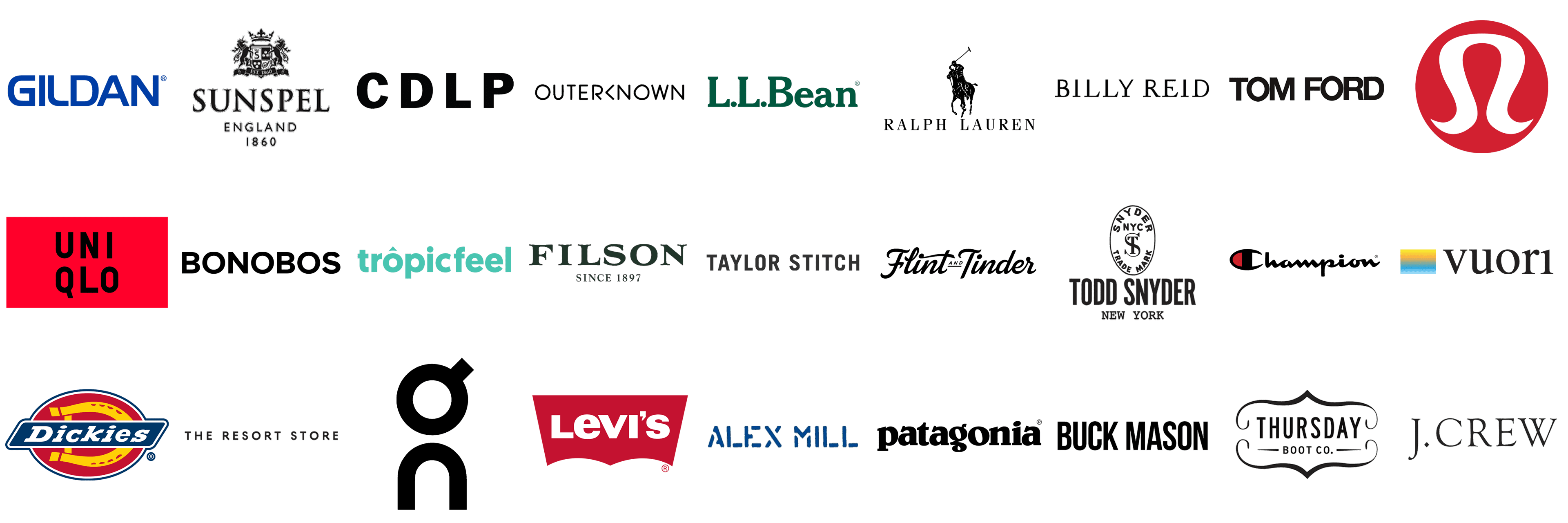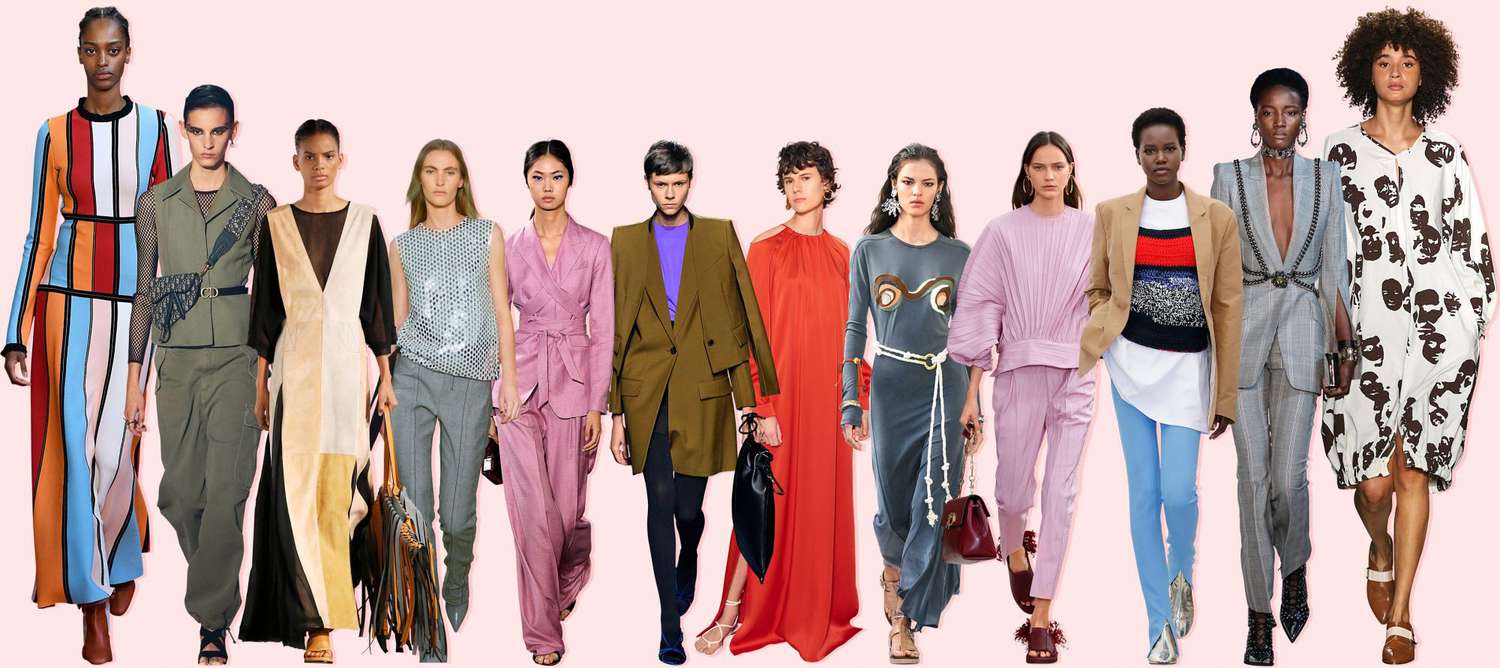How Branded Clothing Combines Fit, Function, and Fabric Innovation
How Branded Clothing Combines Fit, Function, and Fabric Innovation
Blog Article
The Significance of Lasting Clothes: Exactly How It Impacts the Setting and Your Closet
Lasting apparel is progressively acknowledged for its important function in minimizing the environmental impact of the fast fashion market. By concentrating on green products and honest manufacturing methods, it resolves pushing environmental concerns. This change not only profits the world yet also influences customer options, resulting in a much more thoughtful strategy to wardrobe management. Comprehending these characteristics raises vital questions about style's future and personal duty fit it.
The Environmental Impact of Quick Fashion

Benefits of Lasting Materials
Lasting materials offer significant benefits, especially with environment-friendly textile selections that lessen ecological injury. These products also demonstrate sturdiness and longevity, decreasing the demand for regular substitutes. Because of this, they add to an extra sustainable fashion industry and advertise responsible consumer behavior.
Eco-Friendly Textile Choices
While the apparel industry has actually long been connected with quick fads and environmental injury, the rise of environmentally friendly material selections provides a transformative chance. Lasting products such as natural cotton, hemp, and Tencel have actually gained appeal as a result of their reduced ecological influence. These textiles are typically produced without damaging chemicals and require less water, decreasing their carbon footprint - Branded Clothing. Furthermore, numerous green materials are eco-friendly, adding to a circular economy by lessening waste. Choosing lasting materials not only sustains environmentally liable techniques but also advertises much healthier ecosystems. As consumers come to be more mindful of their purchasing power, the demand for environmentally friendly fabrics encourages brand names to innovate and adopt more sustainable manufacturing techniques, eventually profiting the planet and future generations
Sturdiness and Longevity Advantages
Several consumers are increasingly identifying the sturdiness and durability advantages of lasting products in their apparel choices. Unlike conventional fabrics, lasting materials such as natural cotton, hemp, and recycled polyester are crafted to withstand damage, causing garments that last much longer. This lowered frequency of replacement not just conserves customers money with time but also reduces waste generated by fast style. Additionally, sustainable apparel commonly uses environmentally friendly manufacturing approaches that improve material strength, adding to a decrease in the total carbon impact. By purchasing durable clothes, customers can grow a more sustainable closet while appreciating top notch items that maintain their aesthetic and capability with time. Consequently, sturdiness and durability stand as crucial advantages of choosing sustainable materials.
Minimizing Waste Via Sustainable Practices
Decreasing waste in the garment industry can be achieved with ingenious practices such as upcycling and repurposing materials. Additionally, adopting minimalist wardrobe approaches encourages customers to prioritize high quality over quantity, eventually lowering garments consumption. With each other, these strategies add significantly to an extra lasting garments model.
Upcycling and Repurposing Products
Upcycling and repurposing products have actually arised as ingenious approaches in the fashion business, changing disposed of fabrics into valuable new products. This technique not only reduces waste but additionally encourages imagination and originality in clothing layout. By taking old garments and products, designers can develop one-of-a-kind pieces that reflect personal style while decreasing the demand for brand-new resources. Furthermore, upcycling commonly needs less power and water contrasted to standard production processes, significantly lowering the ecological footprint of style. As consumers become much more knowledgeable about sustainability, the popularity of upcycled garments continues to climb, promoting a circular economic situation. Inevitably, these methods add to an extra sustainable future, where style focuses on ecological health and wellness over quick manufacturing and intake.

Minimalist Closet Techniques
As people significantly seek to minimize their ecological influence, adopting minimalist closet strategies has actually gotten grip as an effective technique to sustainable style. These techniques stress high quality over amount, motivating consumers to curate a smaller sized collection of versatile, resilient clothes. By concentrating on ageless pieces that can be mixed and matched, people can minimize the frequency of purchases and inevitably decrease waste.Additionally, minimalism promotes conscious intake, advising customers to assess the ecological and moral implications of their selections. This technique not only cultivates a more lasting way of life yet likewise streamlines daily decision-making concerning clothes. As individuals accept minimal principles, they contribute to a fashion culture that values sustainability and liable consumerism, ultimately bring about a much more eco-conscious society.
The Duty of Moral Labor in Lasting Style
While numerous customers are increasingly conscious of the environmental consequences of their garments choices, the relevance of honest labor practices in sustainable style can not be ignored. Ethical labor includes reasonable wages, safe working problems, and respect for workers' legal rights, developing the backbone of accountable style manufacturing. Brand names that focus on honest labor not just boost neighborhoods but also established a standard for liability in the industry.Moreover, the integration of moral methods fosters transparency, allowing consumers to make informed options regarding their purchases. This method contrasts dramatically with quick style's exploitative labor designs, which often focus on profit over people. By sustaining companies devoted to honest labor, consumers add to a system that values human dignity along with ecological sustainability. Subsequently, ethical labor is not simply an add-on; it is necessary to the wider goal of lasting style, ensuring that the quest for eco-friendliness does not come with the expenditure of human civil liberties.
The Effect of Lasting Garments on Carbon Emissions
Sustainable clothing has the potential to greatly lower carbon exhausts linked with the garment industry. Standard garment production adds notably to greenhouse gas discharges, largely as a result of energy-intensive manufacturing procedures and the use of non-renewable sources. In contrast, sustainable fashion focuses on environmentally friendly products, such as organic cotton or recycled fibers, which commonly require much less power to produce.Moreover, sustainable brand names tend to adopt extra effective manufacturing techniques, lessening waste and reducing overall exhausts. By prioritizing durability and check my source classic design, lasting apparel urges consumers to purchase much less often, more lowering the carbon impact related to overconsumption.Additionally, lots of lasting brand pop over to this site names are committed to openness in their supply chains, making it possible for customers to make educated choices that straighten with their values. Eventually, moving towards lasting clothes can lead to a substantial decrease in carbon emissions, adding to a healthier planet and a much more lasting future for the fashion business.
Sustaining Neighborhood Economic Climates With Sustainable Selections
The change towards sustainable clothing not only addresses ecological issues however also significantly advantages neighborhood economic situations. By selecting lasting fashion, consumers often support tiny businesses and neighborhood artisans, improving area strength. These ventures typically operate a smaller sized range, prioritizing workmanship and ethical practices over mass production.Investing in locally made lasting clothes cultivates job production and boosts economic development within communities. As customers come to be extra familiar with the environmental effect of their purchases, they progressively seek out products that mirror their worths. This need urges regional makers to take on lasting techniques, adding to a round economy.Moreover, sustaining local businesses minimizes transport exhausts, aligning with eco-conscious customer habits. The interconnectedness of sustainable apparel and local economic climates emphasizes the necessary function that individual selections play in promoting both ecological and economic health. By cultivating these regional links, communities can prosper while additionally functioning in the direction of a more lasting future.
Changing Your Storage Room: Tips for a Sustainable Closet
As individuals look for to lower their environmental effect, transforming a storage room right into a lasting wardrobe becomes a vital step. One efficient technique is to review existing clothes, keeping only products that are worn on a regular basis which align with sustainability objectives. Prioritizing top quality over amount is important; spending in resilient pieces from green brand names can considerably lower waste.Additionally, integrating used items can revive a closet while lessening ecological damage. Organizing apparel swaps with good friends or giving away extra products can even more promote sustainability.When purchasing, individuals must look for materials that are natural, recycled, or eco-friendly, and avoid rapid fashion stores - Branded Clothing. Practicing conscious consumption by attentively thinking about each acquisition can special info add to a more sustainable lifestyle. By executing these suggestions, one can produce a wardrobe that mirrors individual style while supporting ecological stewardship
Regularly Asked Concerns
How Can I Identify Sustainable Clothing Brands?
To recognize lasting apparel brands, one must investigate materials utilized, look for accreditations like Fair Trade, and examine the brand name's openness about their manufacturing procedures, labor techniques, and environmental impact, making sure honest and green methods are focused on.
What Are the Expenses Connected With Sustainable Style?
The costs linked with sustainable fashion can vary considerably. Higher production expenses, ethical sourcing, and eco-friendly products usually bring about increased list prices, which may discourage some customers while interesting eco mindful consumers.
Can Lasting Clothing Be Fashionable and Fashionable?
Lasting clothing can undoubtedly be fashionable and trendy. Developers significantly focus on cutting-edge products and honest manufacturing approaches, proving that style and sustainability can exist together. Customers now have varied options that blend looks with ecological consciousness.
How Does Washing Clothes Affect Their Sustainability?
Washing clothing greatly influences sustainability by consuming water and power, adding to pollution, and causing microplastic release. Regular cleaning can degrade materials, shortening their life expectancy and raising the need for replacements, eventually intensifying environmental worries.
What Is the Lifespan of Lasting Apparel Contrasted to Quick Fashion?
The life-span of lasting garments normally goes beyond that of rapid style things, typically long lasting numerous years due to high quality materials and craftsmanship. In comparison, rapid fashion garments may break down promptly, requiring more constant substitutes. Sustainable apparel is significantly acknowledged for its important role in lessening the ecological effect of the quick fashion industry. While numerous customers are progressively mindful of the ecological repercussions of their clothes selections, the relevance of honest labor practices in lasting fashion can not be overlooked. Branded Clothing. Lasting clothes has the possible to substantially reduce carbon emissions connected with the fashion industry. In contrast, lasting style focuses on eco-friendly products, such as organic cotton or recycled fibers, which usually require less power to produce.Moreover, lasting brand names tend to adopt much more effective production practices, decreasing waste and reducing total exhausts. By focusing on durability and classic layout, lasting apparel motivates customers to get less frequently, additional minimizing the carbon footprint linked with overconsumption.Additionally, lots of sustainable brand names are devoted to transparency in their supply chains, allowing customers to make educated options that line up with their worths
Report this page